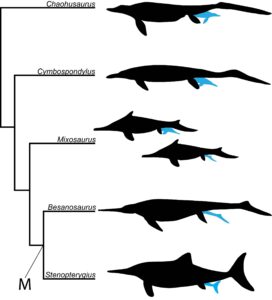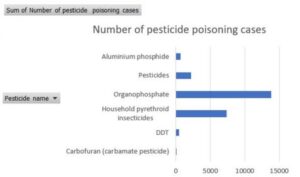
BMC Medical Informatics and Decision Making – Development and user testing of a patient decision aid for cancer patients considering treatment for anxiety or depression

Mental health disorders, including anxiety and depression, affect approximately one third of cancer patients and can negatively affect cancer prognosis. Despite the availability of effective psychological and pharmacologic treatments, around half of affected cancer patients globally do not access support for mental health disorders. Reasons include prioritization of cancer treatment and accepting mental distress as a normal state.
Supporting patients in their decision-making process can increase the uptake of mental health treatment. Patient decision aids (PDAs) are tools to assist patients by providing information about benefits and downsides of potential treatment options. While there are PDAs available for cancer treatment decisions and for mental health treatment decisions in the general population, there is no PDA to support cancer patients considering mental health treatment.
To address this gap, the authors of this paper developed a prototype PDA for cancer patients with anxiety and/or depression. They then sought feedback from both clinicians and patients as to the accuracy, acceptability, and usability. This feedback was used to improve the PDA so that it would provide clear and comprehensive information to support decision making for cancer patients with mental health disorders.
BMC Ecology and Evolution – Heads or tails first? Evolution of fetal orientation in ichthyosaurs, with a scrutiny of the prevailing hypothesis

Ichthyosaurs were giant reptiles who roamed the seas in the Mesozoic era. Unlike most reptiles alive today, ichthyosaurs are thought to have been viviparous, giving birth to live young rather than to eggs. The prevailing theory on ichthyosaur birth has been that the fetus is oriented tail-first as an adaptation to being born underwater, due to asphyxiation risk.
The authors of this paper investigated the evolutionary origin of viviparity and the prevalence of tail-first vs. head-first birth in ichthyosaurs. Examining three fossils, they found that two showed tail-first orientation of the fetus and one showed head-first orientation.
The authors then compared ichthyosaur birth orientation to that of other viviparous reptiles, extant and extinct, and aquatic mammals. Based on their findings, they conclude that asphyxiation risk is unlikely to be a driver of selection for birth orientation in ichthyosaurs or more generally. Rather, body shape likely determines preferred birth orientation, with features such as neck flexibility and pelvic girdle width affecting birth dynamics.
This paper is part of the ‘Paleoecology of extinct species’ Collection currently open in BMC Ecology and Evolution. View the call for papers and read other papers in this Collection here.
In addition, the authors of this paper have written a Behind the Paper post talking about why they studied this topic.
BMC Public Health – Suicides by pesticide ingestion in Pakistan and the impact of pesticide regulation

Suicide is a major health concern in Pakistan, with pesticide poisoning reported as one of the leading causes of death by suicide. However, the problem is understudied, partially due to a lack of national suicide data.
In order to better understand the scope of the problem and to determine the most commonly used pesticides for suicide, the authors of this study conducted a systematic review of relevant literature. The pesticides identified in the studies were grouped by hazard level and legal status in Pakistan.
The review identified two commonly used pesticides responsible for the majority of the identified cases of self-poisoning, but found that the reported data was incomplete. The authors propose changes to regulation and availability of highly hazardous pesticides that could reduce their use in suicide, as well as comprehensive data collection to allow the problem to be studied more closely and better policies to be enacted.
BMC Pregnancy and Childbirth – A prospective, double-blinded cohort study using quantitative fetal fibronectin testing in symptomatic women for the prediction of spontaneous preterm delivery

Preterm birth, before 37 weeks gestation, is a risk factor for adverse maternal and fetal outcomes. While many pregnant women who present with threatened preterm labor go on to deliver at term with no intervention, women who progress to preterm labor require timely interventions to delay birth and support fetal development. Ultrasound measurement of the cervix can allow for accurate prediction of risk and determining which women require intervention, however it is difficult and not universally available.
Another way to measure preterm birth risk in women with threatened preterm labor is with biomarkers. The authors of this paper studied the use of quantitative measurement of fetal fibronectin in vaginal secretions in order to predict preterm birth in women with symptoms of preterm labor. They found that increasing concentrations of fetal fibronectin correlated with increasing rates of preterm birth. They also determined specific thresholds for reliable prediction of birth within two days and within two weeks of testing.
These thresholds allow for classifying risk of preterm birth into very low, intermediate, and high. Women at very low risk of preterm birth could be managed with monitoring only, rather than with interventions, reducing the use of unnecessary interventions.
BMC Genomics – The genetic basis of wing spots in Pieris canidia butterflies
 The genetic network involved in the formation of eyespots on the wings of nymphalid butterflies has been extensively studied and many of the genes involved have been identified. While it is known that simpler spots on the wings of pierid butterflies share some genetic circuitry with nymphalid eyespots, they have not been as thoroughly studied.
The genetic network involved in the formation of eyespots on the wings of nymphalid butterflies has been extensively studied and many of the genes involved have been identified. While it is known that simpler spots on the wings of pierid butterflies share some genetic circuitry with nymphalid eyespots, they have not been as thoroughly studied.
To facilitate investigation into the genetic basis of pierid spots, the authors of this study generated a high-quality draft genome for Pieris canidia, the Indian cabbage white butterfly. They then used differential gene analysis on very small pieces of pupal wing tissue sampled from in and around the developing spot region to identify the genes involved in spot formation and compared these to those involved in eyespot formation in nymphalid butterflies.
Among the genes identified as contributing to spot development were pigmentation genes, transcription factors, and signaling pathways. Some of these signaling pathways are also used in nymphalid eyespot development. Further research is needed to determine if these are evolutionarily conserved pathways or represent convergent evolution in different lineages.
Comments